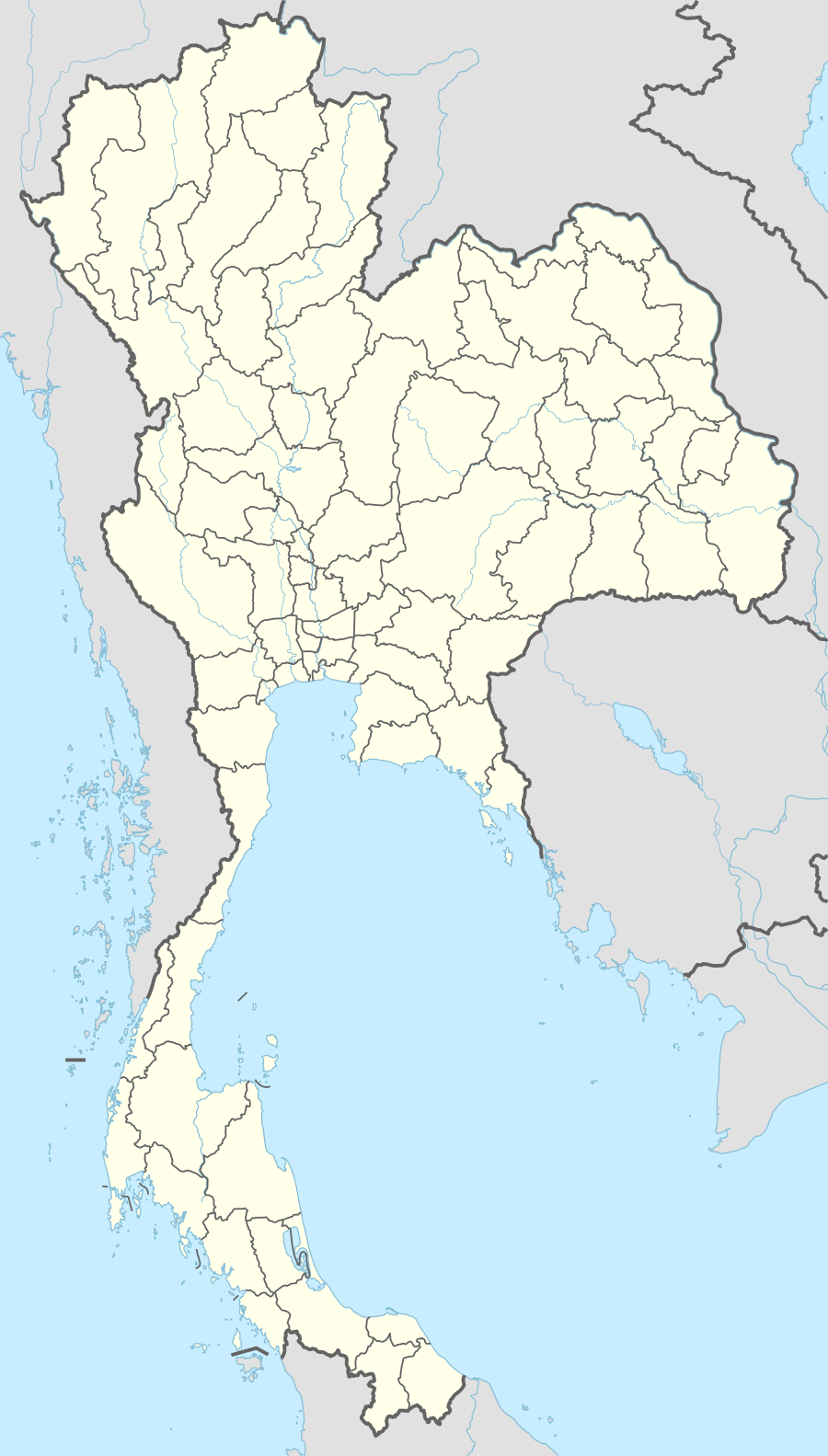Op Luang National Park
| Op Luang National Park | |
|---|---|
| อุทยานแห่งชาติออบหลวง | |
|
IUCN category II (national park) | |
 Park location in Thailand | |
| Location | Chiang Mai Province, Thailand |
| Nearest city | Lamphun |
| Coordinates | 18°13′23″N 98°28′52″E / 18.22306°N 98.48111°ECoordinates: 18°13′23″N 98°28′52″E / 18.22306°N 98.48111°E |
| Area | 553 km2 (210 sq mi) |
| Established | 1991[1] |
| Governing body | Department of National Parks, Wildlife and Plant Conservation |
Op Luang National Park (Thai: อุทยานแห่งชาติออบหลวง) is a national park in Chiang Mai Province, Thailand. It is home to a scenic river canyon, waterfalls and caves.[2]
Geography
Op Luang National Park is located about 105 kilometres (70 mi) south of Chiang Mai in Chom Thong, Mae Chaem and Hot districts. The park's area is 553 square kilometres (210 sq mi). It is contiguous with Doi Inthanon National Park. Like Doi Inthanon park, Op Luang is located in the Thanon Thong Chai Range.[1][2]
History
Prehistoric paintings and other artefacts have been found in Op Luang National Park. The Doi Pha Chang area has a cliff painting of an elephant. Near the Op Luang canyon there are more rock paintings, as well as ancient jewellery and tools. Carbon-dating has indicated these relics to be about 28,000 years old.[1][3]
The park was a forest park from 1966 to 1991. In 1991 Op Luang became Thailand's 68th National Park.[1]
Attractions

The park's main attraction is the Op Luang canyon, carved out by the Mae Chaem river. The canyon is steep-sided and about 300 metres (1,000 ft) long.[1]
Waterfalls include Mae Bua Kham, about 50 metres (160 ft) high; Mae Chon, about 80 metres (260 ft) wide and the year-round Mae Tia about 80 metres (260 ft) high. Thep Thanom is a hot spring in the west of the park.[1]
Tham Tong is a granite and limestone cave leading to long tunnels. Tham Tu Pu cave features stalagmites and stalactites.[1][2]
Flora and fauna
The park features forest types including mixed deciduous, deciduous dipterocarp and evergreen. Tree species include takian, Dipterocarpus alatus, Xylia xylocarpa, teak, Pterocarpus macrocarpus, Toona ciliata and Lagerstroemia speciosa as well as various bamboos, palms and ferns.[2]
Animal species include tiger, sambar deer, Asiatic black bear, civet, pangolin, macaque, Siamese hare, serow, langur, mongoose, tree monitor, northern treeshrew, barking deer and wild boar.[1][2]
Avian life includes vernal hanging parrot, scarlet minivet, white-rumped shama, spotted dove, coucal, hill myna, Siamese fireback, red junglefowl, shikra, falconet, bulbul, woodpecker, pheasant and partridge.[1][2]
References
| Wikimedia Commons has media related to Op Luang National Park. |
- 1 2 3 4 5 6 7 8 9 "Ob Luang National Park". Department of National Parks (Thailand). Retrieved 9 April 2014.
- 1 2 3 4 5 6 Sutthipibul, Vasa; Ampholchantana, Chantanaporn; Dulkull Kapelle, Peeranuch; Charoensiri, Vatid; Lukanawarakul, Ratana, eds. (2006). "Op Luang National Park" (PDF). National Parks in Thailand. (free online from the publisher). National Park, Wildlife and Plant Conservation Department. pp. 58–59. ISBN 974-286-087-4. Retrieved 9 April 2014.
- ↑ "Op Luang National Park". Michelin Travel. Retrieved 9 April 2014.